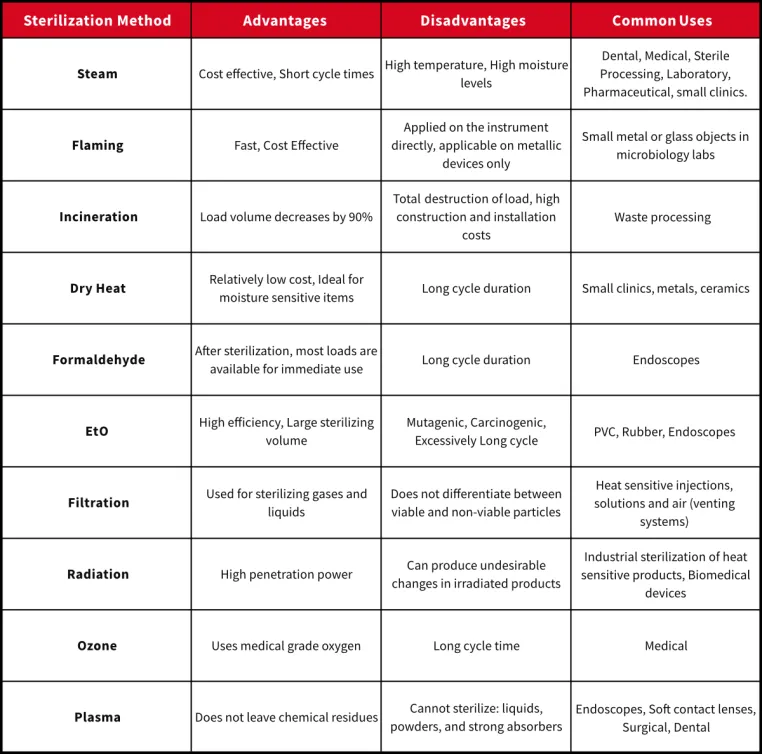How do you select the appropriate sterilization method when there are so many choices available? Your decision will depend on many different parameters, including:
The sterilization methods series can help you make an informed decision. It includes 12 blog posts and covers 9 different sterilization methods that can be divided into two major categories: heat and non-heat sterilization methods.
Sterilization methods that use heat can be further sub-categorized into:
Non-heat sterilization methods are further divided into four categories of low temperature methods that use gas:
The last category is physical sterilization methods:
This table summarizes each method:

This infographic provides a visual overview of each method.

The sterilization methods series has come to an end. We’d like to hear from you and learn which is your preferred sterilization method and why. Please post your answers in the comments section below.